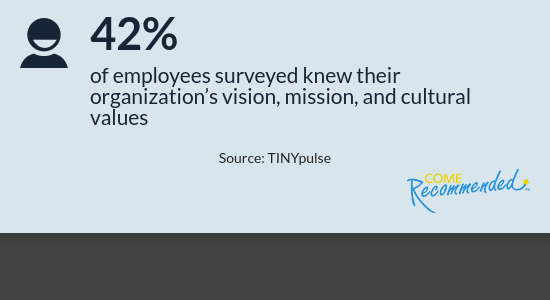How to Attract Talent With Effective Storytelling

But employer branding is more than just promoting a company online — like marketing and advertising, it relies on effective storytelling.
When done right, telling the company’s story will create a compelling brand employees want to work for. Here’s how storytelling works, and how you can leverage its power to attract job seekers:
We’re Attracted to Stories — It’s Science
There’s a reason why kids watch Disney movies on repeat and emotional Upworthy articles go viral — we are naturally drawn to stories.
Researcher Paul Zak describes in the Harvard Business Review what years of research has shown him: his lab discovered that the neurochemical oxytocin is produced when we feel trust and kindness toward others. The chemical encourages us to cooperate with others and enhances our sense of empathy.
Further studies conducted by Zak’s lab found that listening to or watching character-driven stories promoted oxytocin production.
In addition, in 2012, researchers from the University of Emory found that hearing metaphors activates certain regions of the brain. In other words, our brains act as if we can actually feel and experience the imagery we read and hear.
What does all this research tell us? Storytelling is a powerful tool that engages people and increases their trust and empathy.
Be Dramatic
In a survey conducted by TINYpulse in 2013, only 42 percent of employees surveyed knew their organization’s vision, mission, and cultural values. Make the core of your brand more memorable with storytelling.

When telling the story of your brand, remember the dramatic arc. The most engaging stories follow similar patterns. There’s a problem, tension, or struggle — this is what captures our attention, Zak suggests.
We are drawn to the emotions the characters feel in these situations. A study published in November 2014 in NueroImage found that emotional language can synchronize thoughts among people. This means people mimic the emotions and behaviors of the characters in a story. We feel what they feel and become invested in their stories.
Use the dramatic arc and the power of emotions to tell your origin story and characterize your employer brand. What challenges were overcome to create your company? What was the problem? How was it resolved? Who are the characters and how did they feel?
You can use the same format to tell the stories of other employees. What problems did they face before working for the brand, and how were they overcome?
Be Transparent
Storytelling can also help build trust through transparency, an attractive quality for job seekers. Management transparency is the top factor for job satisfaction, according to the TINYpulse survey.
Remember, when building your employer brand, you’re not trying to sell anything — especially not your product. You are showcasing what your company is all about and what the work culture is like. Don’t betray job seekers’ trust.
Instead, use stories to present the employer as transparent, honest, and trustworthy. Use blog posts to tell stories using reputable sources and information that echo the brand’s message but don’t directly promote the company. Feature messages from executives, managers, and other leaders that go beyond standard corporate drivel, showcase personality, and engage the emotions of job seekers.
For example, the Johnson & Johnson career website provides a run-down of each step in the application and hiring process, and the company’s social media accounts offer general job search tips and career advice.
Be Different
We are constantly bombarded with messages and information. A 2014 report from Nielsen found that Americans spend 11 hours each day with digital media. Even with powerful and engaging stories, messages get lost if they are only sent via one platform.
To reach job seekers, tell stories with different types of media. Videos, employee interviews, and photos can help attract the attention of job candidates and show off your employer brand. Employers like Comcast have crafted branded videos featuring a “day in the life” of an employee.
Branch out and try other visual platforms like Instagram and Snapchat to share your story.
What storytelling strategies do you use to promote employer brand?

